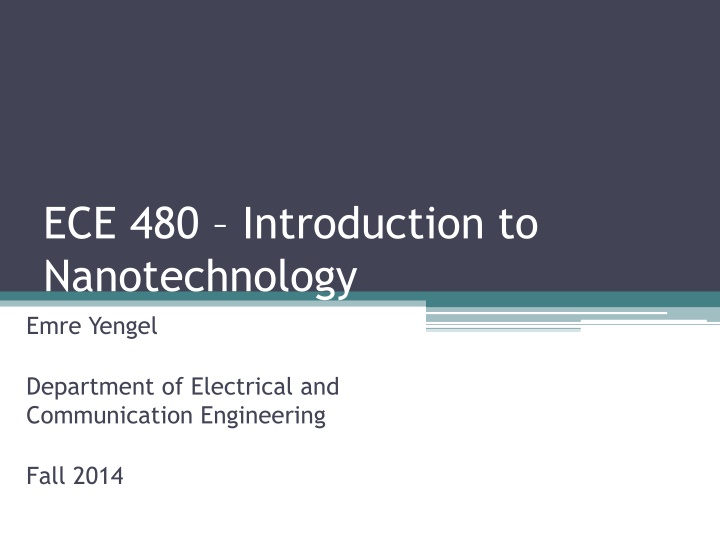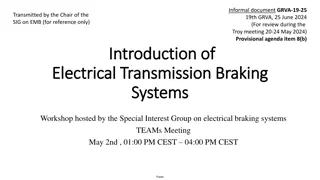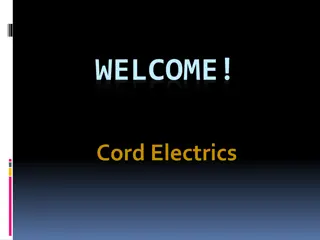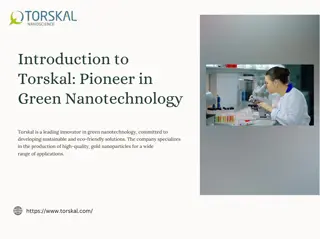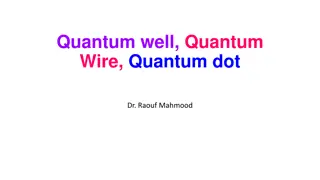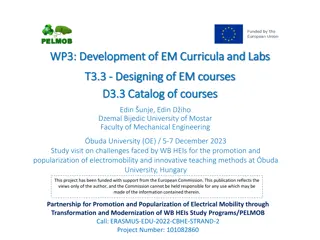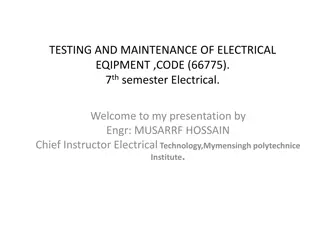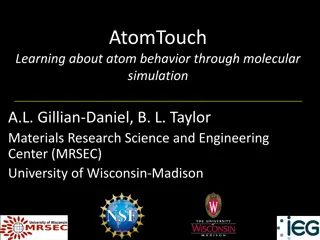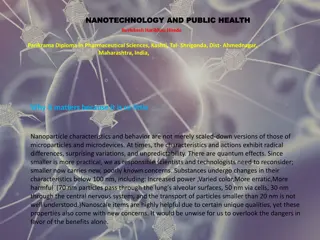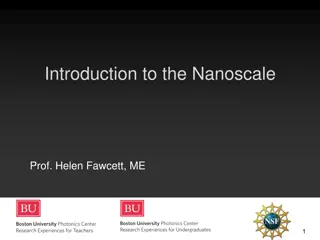Introduction to Nanotechnology in Electrical Engineering
This collection of Q&A covers various concepts in nanotechnology, semiconductors, and compound materials like Germanium, PbTe, GaAs, and GaP. It includes calculations for drift velocity, intrinsic carrier concentration, conductivity, and more. Explore the fundamental principles and applications of nanotechnology through these insightful questions and answers.
Download Presentation

Please find below an Image/Link to download the presentation.
The content on the website is provided AS IS for your information and personal use only. It may not be sold, licensed, or shared on other websites without obtaining consent from the author.If you encounter any issues during the download, it is possible that the publisher has removed the file from their server.
You are allowed to download the files provided on this website for personal or commercial use, subject to the condition that they are used lawfully. All files are the property of their respective owners.
The content on the website is provided AS IS for your information and personal use only. It may not be sold, licensed, or shared on other websites without obtaining consent from the author.
E N D
Presentation Transcript
ECE 480 Introduction to Nanotechnology Emre Yengel Department of Electrical and Communication Engineering Fall 2014
Q&A 1. (a) Calculate the drift velocity of electrons in germanium at room temperature and when the magnitude of the electric field is 1000 V/m. (b) Under these circumstances, how long does it take an electron to traverse a 25-mm length of crystal? (Consider the room temperature mobility of electrons in Ge is 0.38 m2/V-s) a) b)
Q&A 2. At room temperature the electrical conductivity of PbTe is 500 ( -m)-1 , whereas the electron and hole mobilities are 0.16 and 0.075 m2/V , respectively. Compute the intrinsic carrier concentration for PbTe at room temperature.
Q&A 3. An n-type semiconductor is known to have an electron concentration of 3 x 1018m-3. If the electron drift velocity is 100 m/s in an electric field of 500 V/m, calculate the conductivity of this material.
Q&A 4. Germanium to which 5 x 1022m-3 As atoms have been added is an extrinsic semiconductor at room temperature, and virtually all the As atoms may be thought of as being ionized (i.e., one charge carrier exists for each As atom). (a) Is this material n-type or p-type? (b) Calculate the electrical conductivity of this material, assuming electron and hole mobilities of 0.1 and 0.05 m2/V-s, respectively. (a) n -type since Sb is a donor in Ge. (b)
Q&A 5. A parallel-plate capacitor using a dielectric material having an rof 2.5 has a plate spacing of 1mm. If another material having a dielectric constant of 4.0 is used and the capacitance is to be unchanged, what must be the new spacing between the plates?
Q&A 6. Gallium arsenide (GaAs) and gallium phosphide (GaP) are compound semiconductors that have room-temperature band gap energies of 1.42 and 2.25 eV, respectively, and form solid solutions in all proportions. Furthermore, the band gap of the alloy increases approximately linearly with GaP additions (in mol%). Alloys of these two materials are used for light-emitting diodes wherein light is generated by conduction band-to- valence band electron transitions. Determine the composition of a GaAs GaP alloy that will emit orange light having a wavelength of 0.60 m.
Q&A 7. The intensity of light absorbed while passing through a 16-kilometer length of optical fiber glass is equivalent to the light intensity absorbed through for a 25-mm thickness of ordinary window glass. Calculate the absorption coefficient of the optical fiber glass if the value of for the window glass is 5 10 4mm 1 The fraction of light transmitted through the window glass
